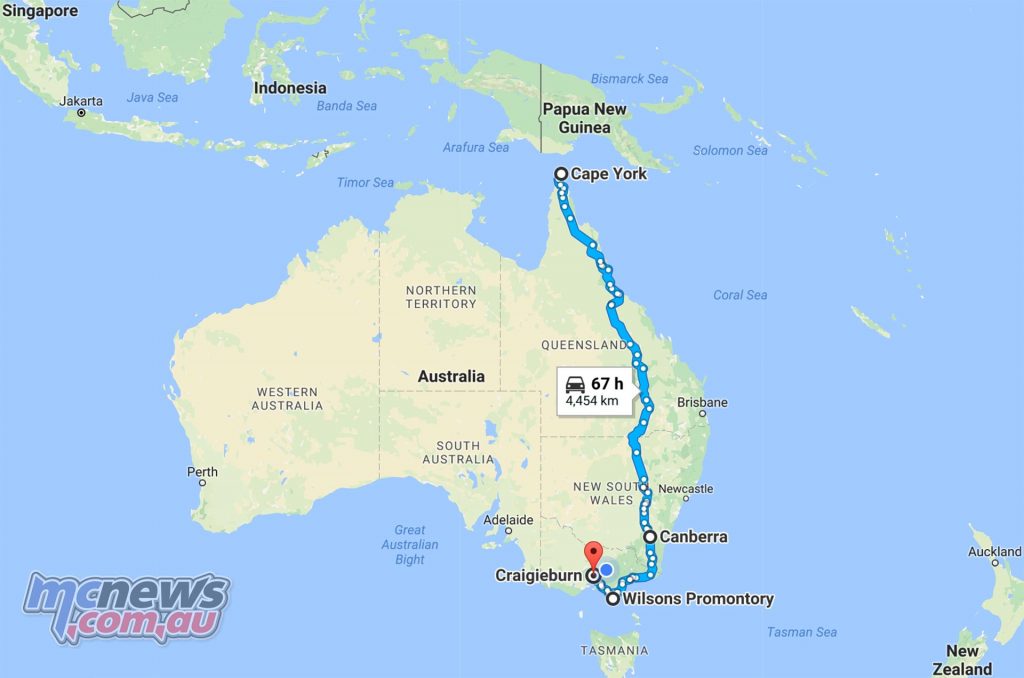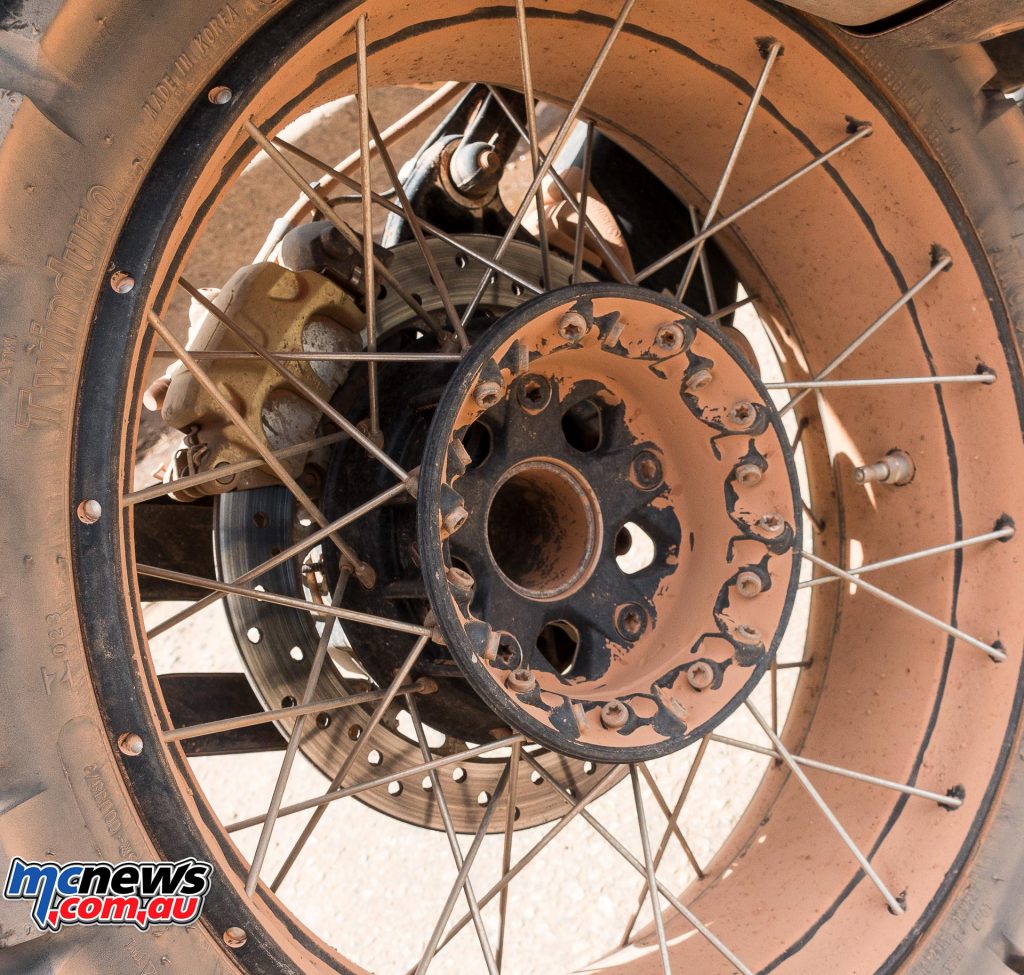Cape York to Wilsons Promontory on the BMW R 1200 GS Rallye X – Part Six (Final)
Canberra – Cooma – Bombala – Cann River – Orbost – Bairnsdale
Wilsons Promontory – Leongatha – Melbourne = 1000km | All up 5000km
Back To Part 1 | Part 2 | Part 3 | Part 4 | Part 5 | Part 6
The final day of my Cape York to Wilsons Promontory epic, was what I thought would be a relatively simple run from Canberra down to the southernmost point of the Australian mainland, but in the end it turned out to be perhaps the most testing day of this entire trip. While I wrote the previous yarns from each day as I progressed, it is now a full week later that I get around to penning this final instalment of what has been a six-part series.
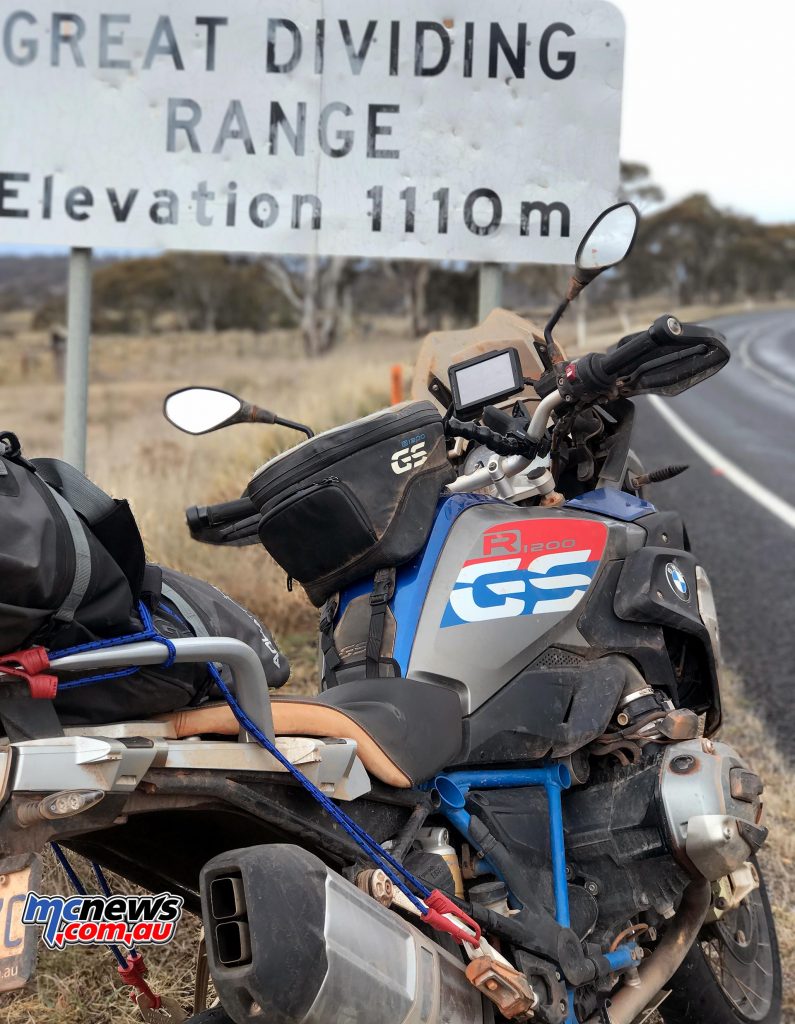
I had been warned that Canberra was experiencing somewhat of a kangaroo problem, thus with that in mind, and the temperature only just above freezing at 0700, I was happy enough to start the morning off with some work before finally making tracks out of the nations capital around 0900. Well, the warning had been correct. There is around 100km between Canberra and Cooma but once on the highway out of Canberra I must have seen 100 dead kangaroos and wombats in the first 10km! They all looked relatively fresh, considering the cool climate I guess a few could have been there a few days, but still, I was very glad that I had chosen the option of a late departure.
A left turn at Cooma had me turning towards Nimmitabel on the Monaro Highway which then changes names to the Snowy Mountains Highway. Out the other side of Nimmitabel I turned right to head towards Bombala, on a snaking piece of wet blacktop that again became the Monaro Highway. It never got above 10-degrees celsius through this stretch, but I was still pretty comfortable thanks to wearing the right gear. A BMW Street Guard suit, Sidi Adventure boots and DriRider gloves.
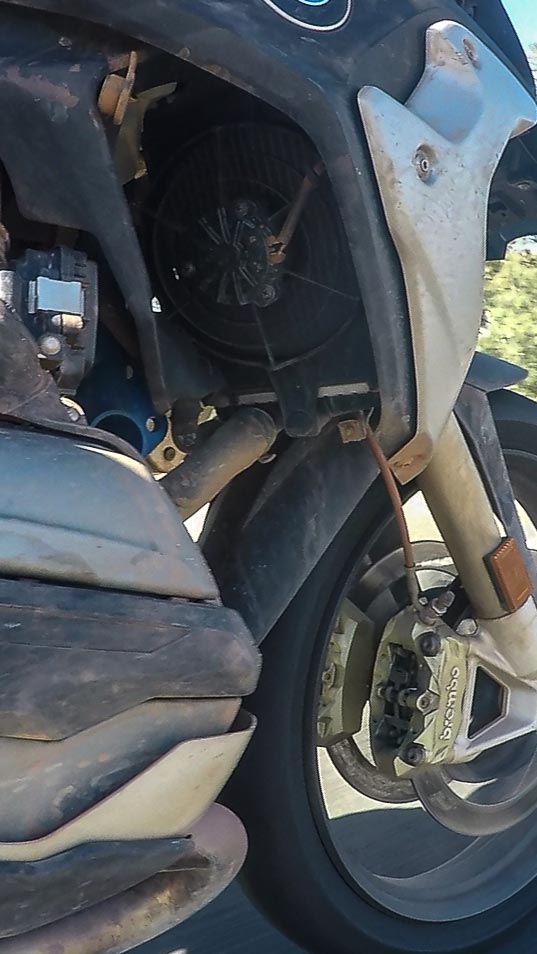
The ins and outs of the BMW Street Guard suit I covered well in my ride from Melbourne to Darwin a few weeks earlier, but considering the adventure sections earlier in this particular ride I had switched to Sidi Adventure boots, and the latest and much improved version of the Shoei Hornet X2 Adventure helmet. Most of this gear is definitely top of the line premium brands, with premium price tags to match, and all fulfilled their design briefs admirably well.
The lowest priced items in my ensemble were DriRider’s latest ‘Adventure 2’ Winter Touring gloves. For the astounding bargain price of $89.95 I can’t recommened these highly enough. They performed better than many gloves that will set you back more than twice that much, providing good feel at the controls while keeping my digits warm and dry. Like all Dririder gear they are available in a squillion different sizes, from XS right through to 4XL, and also a further four female specific sizings.
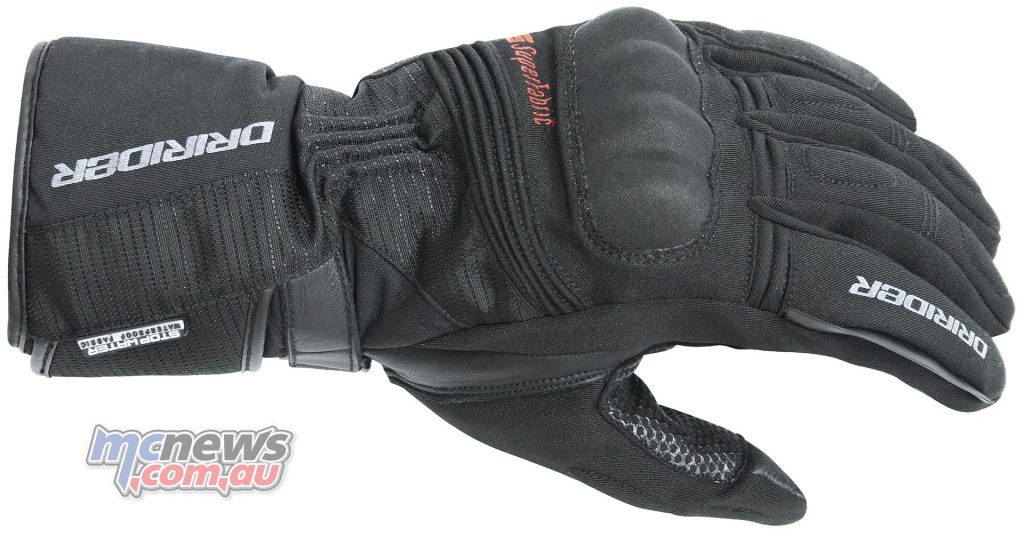
It is rare I find winter gloves that I can pull on and off all day without foaming at the mouth through frustration, afford great tactility at the fingertips, yet remain warm and dry, but in these I found that rare combination. If temperatures dropped below zero they might not have cut the mustard on a long run, but after a full day in mainly wet conditions, with the mercury rarely getting above 10-degrees, they did their job admirably well. They had a little assistance from the knuckle guards on the R 1200 GS Rallye X and their heated grips, but still, for less than 90 bucks they’re a bargain in anyone’s language.
I was greeted on my entrance to Bombala with signs announcing that it was a motorcycle friendly town. Signs also advertised the upcoming Bombala Bike Show, the 26th edition of which will be staged on the November 17-19 weekend. Might have to book a return visit to check it out!
From Bombala I made a beeline towards Cann River, another well known stop for Australian motorcyclists. Particularly amongst those Sydneysiders that make their annual pilgrimage to Phillip Island each year for MotoGP or World Superbike. I stopped here to take a photo in front of the Cann River Hotel, just as I had done in 2010 when I rode a VFR1200F around Australia.
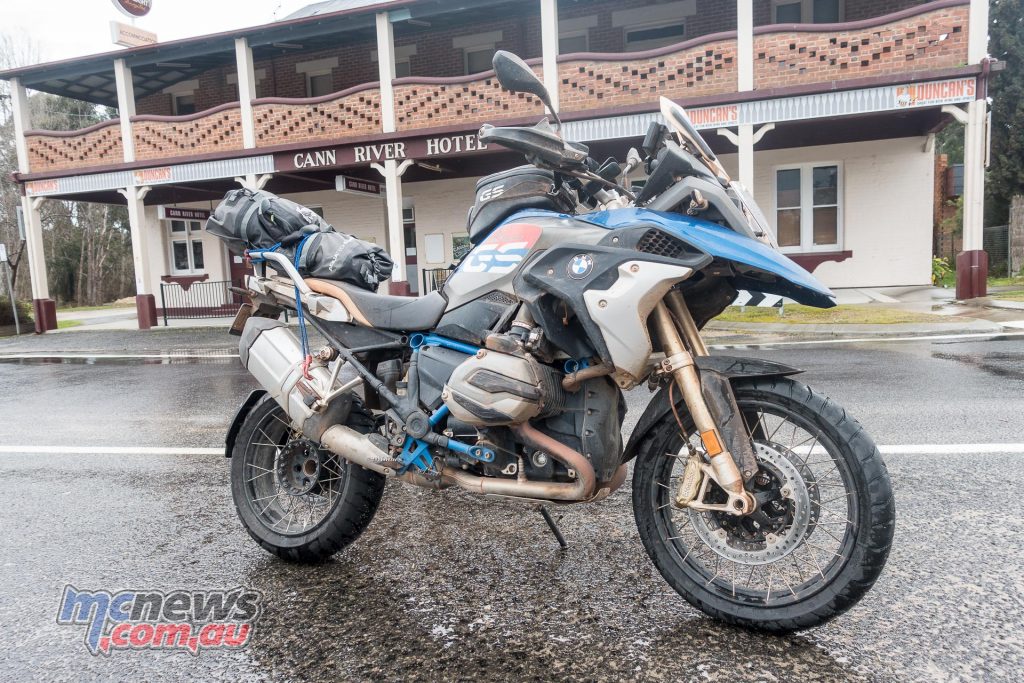
75km later I stopped for fuel in Orbost before continuing on through Bruthen, Bairnsdale, Stratford and Sale, before again taking some of the roads less travelled through to Alberton. Then stopped for a photo at Silcock’s Hill, by which time I had been on the bike for around seven hours and 650km.
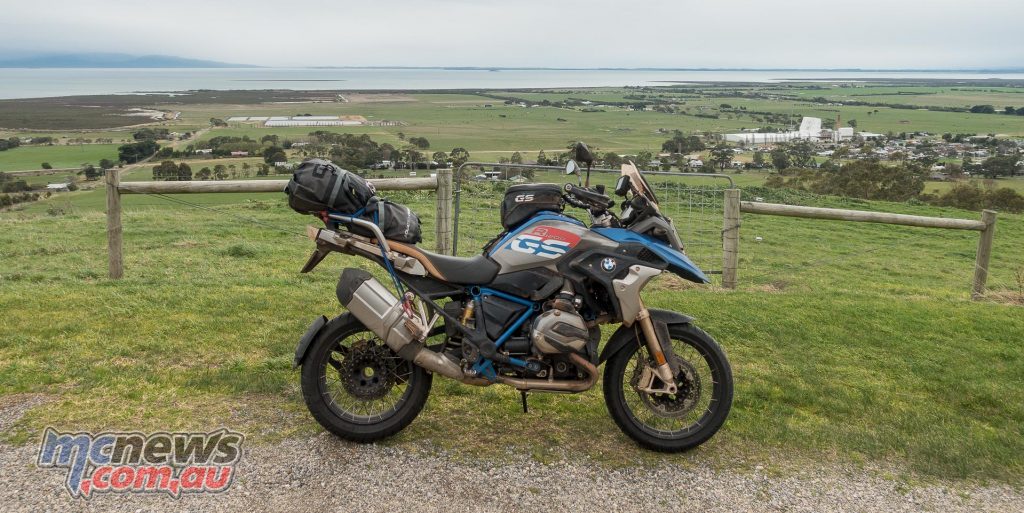
Light was now starting to fade and I was keen to press on and get to Wilsons Promontory before dark. I wanted to get some shots of the GS at the southernmost point of the Australian mainland, to go with the images I took six days earlier on the beach at the tip of Cape York.
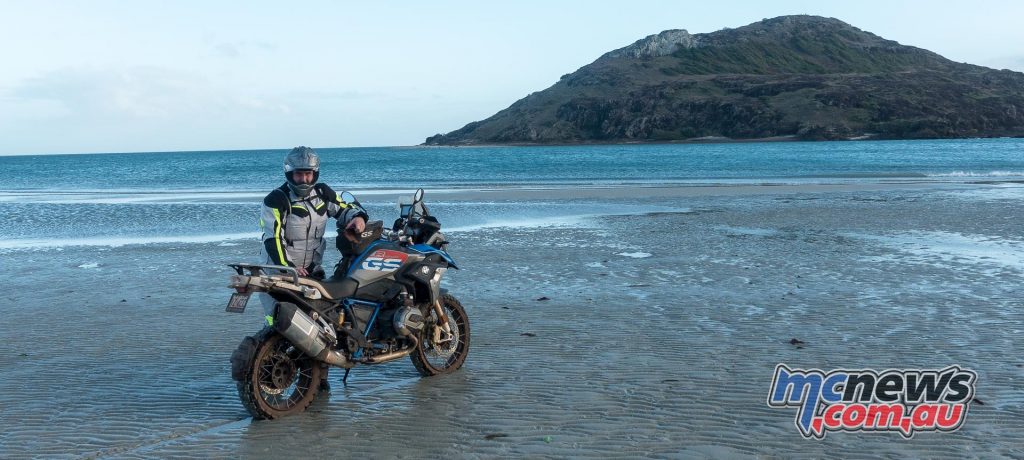
While the tip of Wilsons Prom did not look far from here it turned out to be quite a long way in. I had never actually ventured through the gates of the Wilsons Promontory National Park before, and had thus never fully realised just how expansive it is. Or, in fact, how wild it is!
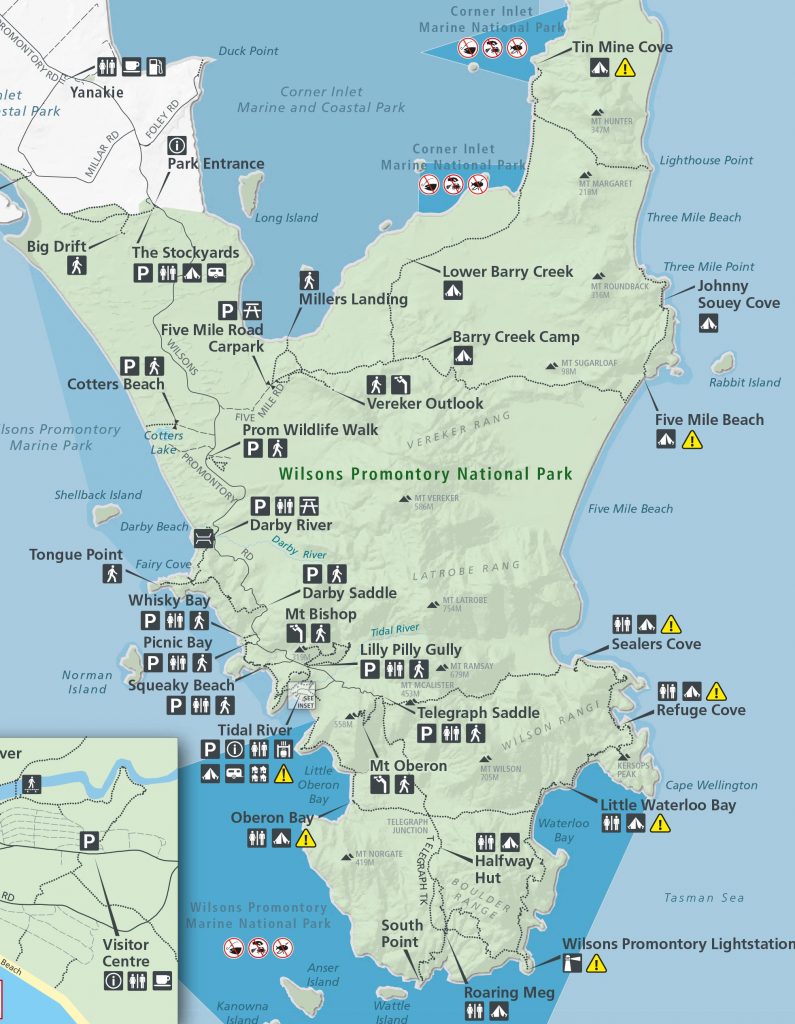
Covering more than 500 square kilometres I was amazed at the enormity of the park. Clearly getting out to the southernmost point of it was not going to be an easy task! It was a half-hour ride from the gates to the end of Telegraph Track, which was the closest point I was going to be able to get the GS without getting arrested. I have never seen so many Park Victoria vehicles and Rangers in the one place, the joint must cost tens of millions to maintain each year.
From the car park at the end of Telegraph Track it is still quite a trek down to the southernmost point where you look across the Wattle Island. Of course, even if I had got the BMW down there, I would never be able to publish a photo of it…
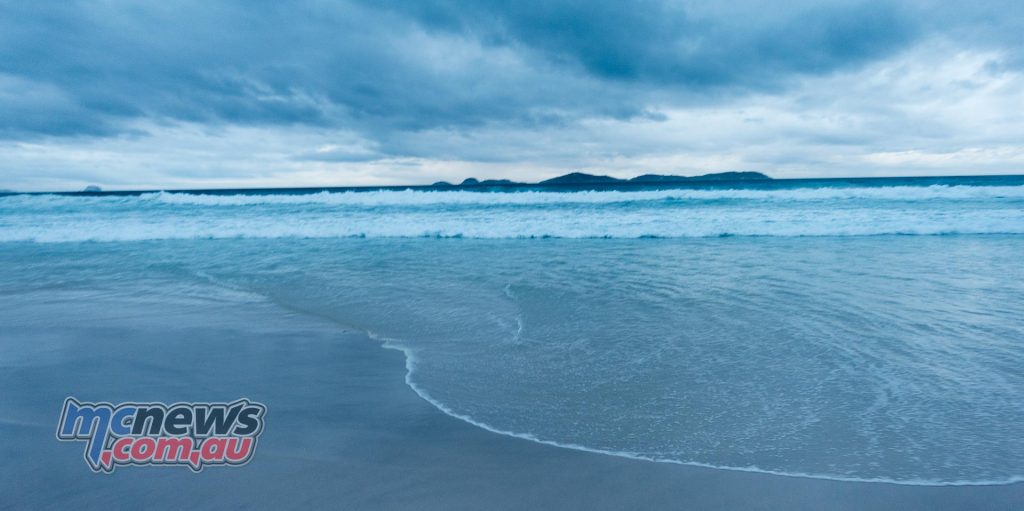
The whole of the park was quite wild and wooly, with plenty of rocky outcrops and mountain peaks dotting the interior, let alone the coastal fringes. In many ways it is actually much more wild than Cape York, despite the crocodiles and remoteness of that opposite tip of the country.
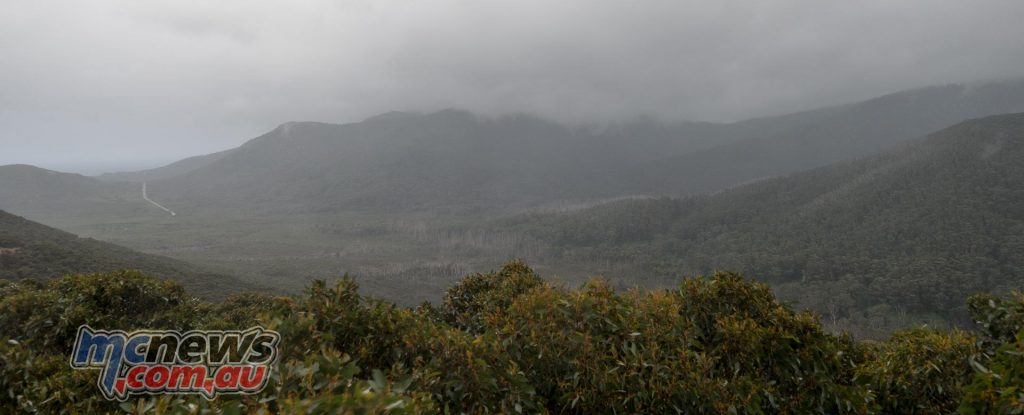
The roads are all sealed but none of them actually go to any significant points of interest. The many car parks dotted around the island join an amazing network of hiking tracks and trails, most of which bicycles are not allowed on, let alone motorcycles.
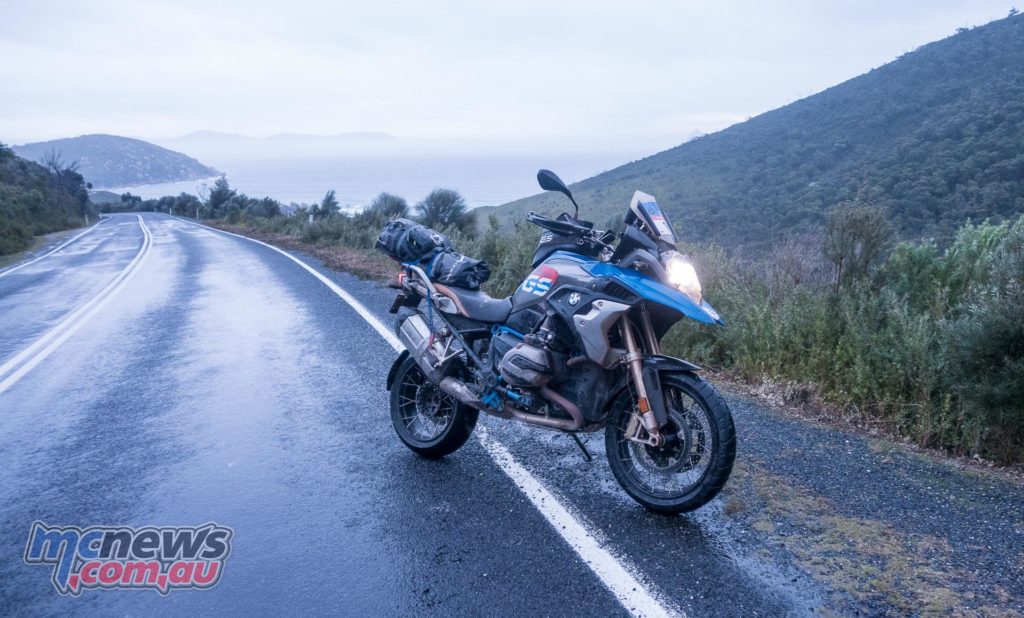
It was a surprising end from my northernmost to southernmost point trek, but the day’s adventure was far from over. It was now dark and rain was sheeting down as the realisation dawned that I still had more than 250km to go in order to get in to Melbourne.
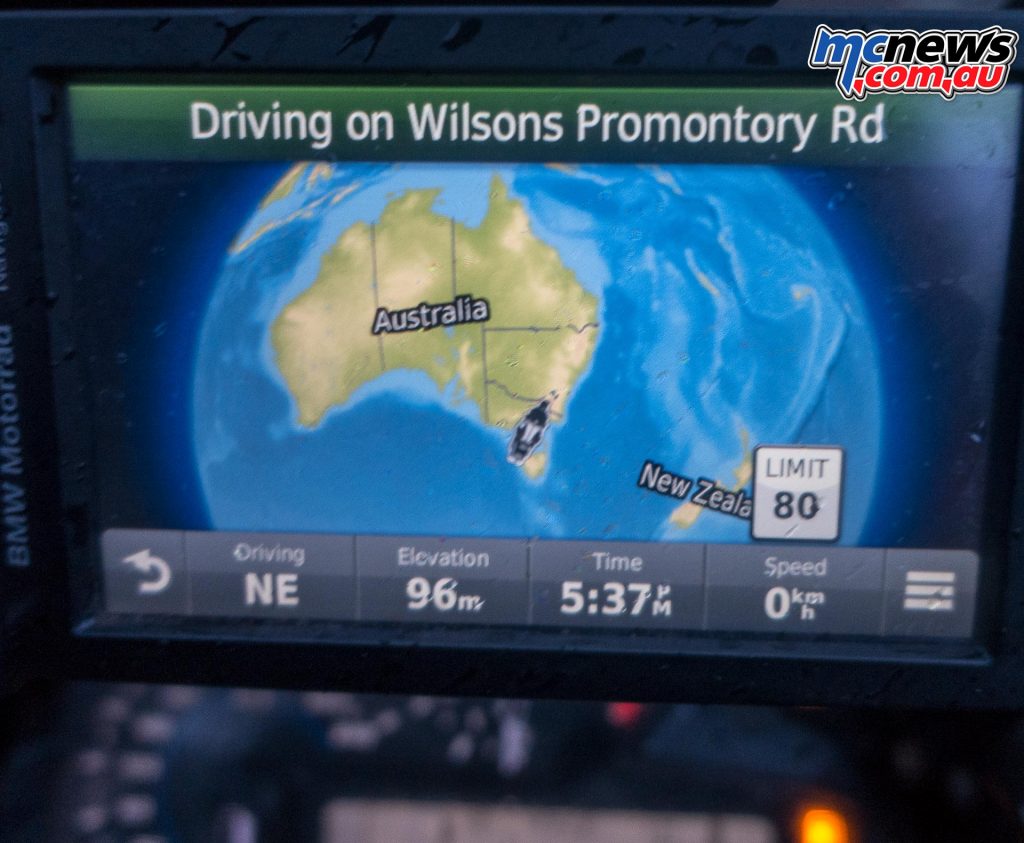
On reflection I should have really pulled up stumps for the night at Fish Creek. As I refuelled the BMW for the run in to Melbourne the Fish Creek Hotel across the road looked very welcoming indeed. The rain was teeming down, hard, visibility was so poor that at times I did not know if I was on the correct side of the road until another vehicle’s headlights peered at me through the dark.
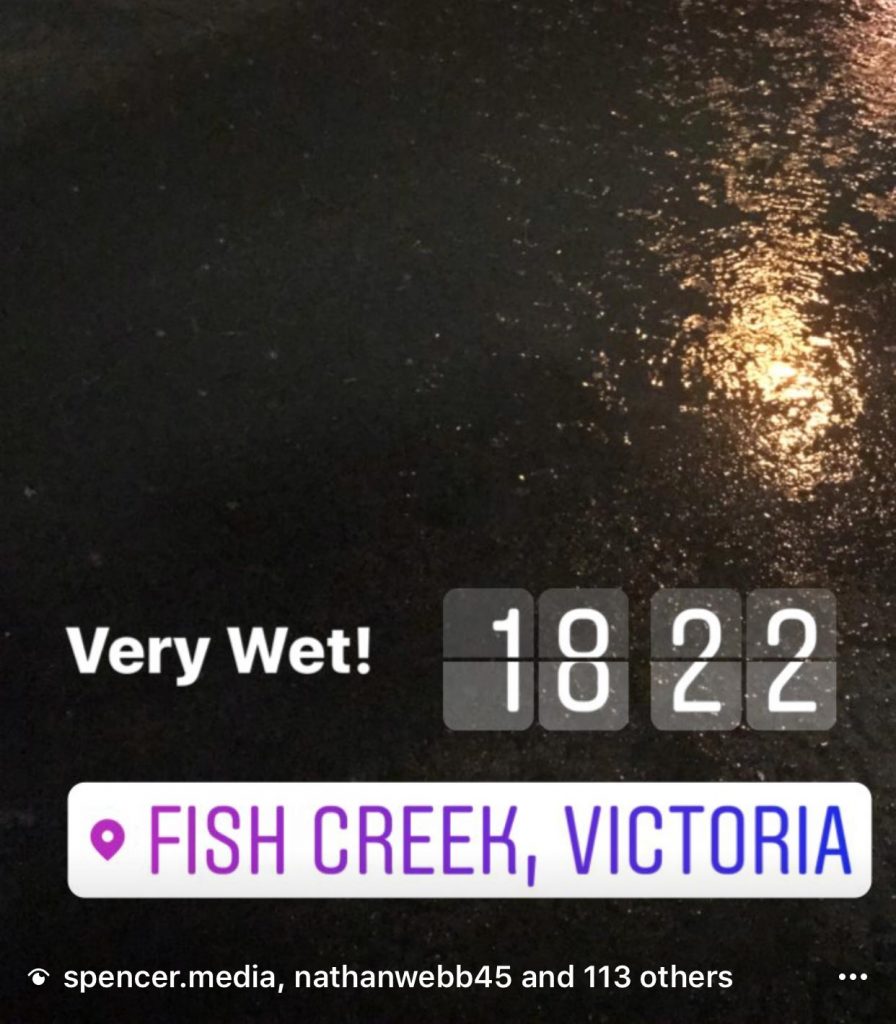
The roads from Wilsons Prom through to Leongatha warrant caution in dry daylight, in these conditions it was just plain silly. I was keen to press on though, as a warm bed, with someone warm in it, was waiting for me at the other end.
By the time I arrived in Melbourne it had been almost another 1000km day, and almost 5000km over the six day journey. The first three of which had been undertaken primarily off-road, as part of the BMW GS Safari Enduro event.
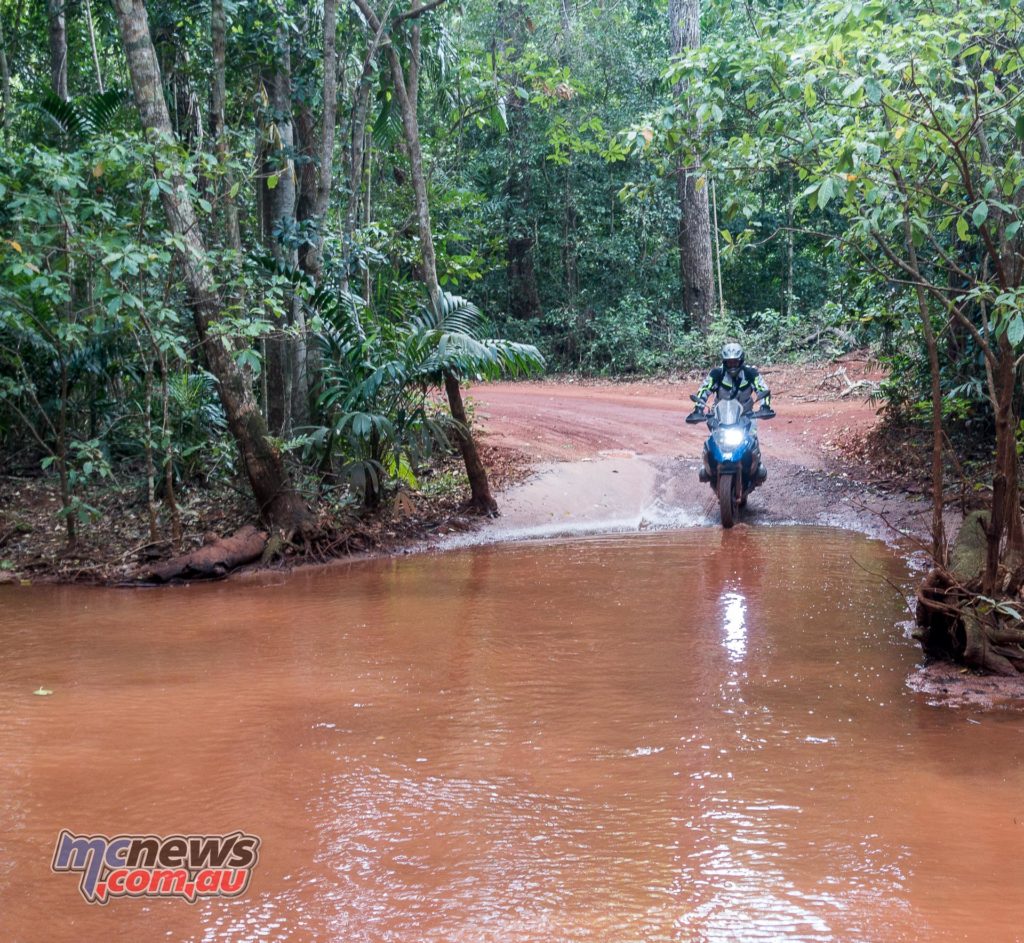
It’s fair to say that there is little else on two wheels as capable for such a journey as the R 1200 GS. After wrecking a set of TKC80 tyres on the dirt sections, some road rubber was fitted for the tarmac run south and the bike transformed from outback adventure bike to tarmac tourer. Just dial in the appropriate settings to the electronic suspension, traction control and ABS, and the bike is transformed from desert warrior to blacktop brawler. All the while retaining a high level of comfort and ability for all situations.
The Rallye X version of the GS I was astride for this adventure is the most hard-core variant of the GS. It offers more ground clearance and longer travel suspension than other GS models, but thanks to the wonders of the latest generation ESA can still hustle extremely well on tight mountain roads.

If you are any shorter than my 178cm I would suggest that the Rallye X in standard trim is perhaps not the GS for you. If I was a single centimetre shorter I would have dropped the bike numerous times during this trip at a standstill, as if the bike is off-level at all, you can easily miss your footing.
Shorter folk can order a special version of the Rallye X with shortened suspension. A few years ago opting for the shortened suspension meant missing out on ESA, these days that is not the case. BMW Motorrad Australia General Manager Andreas Lundgren rode a shortened Rallye X during the GS Safari Enduro, at 171cm tall that is not something he could have easily managed on the full height bike.
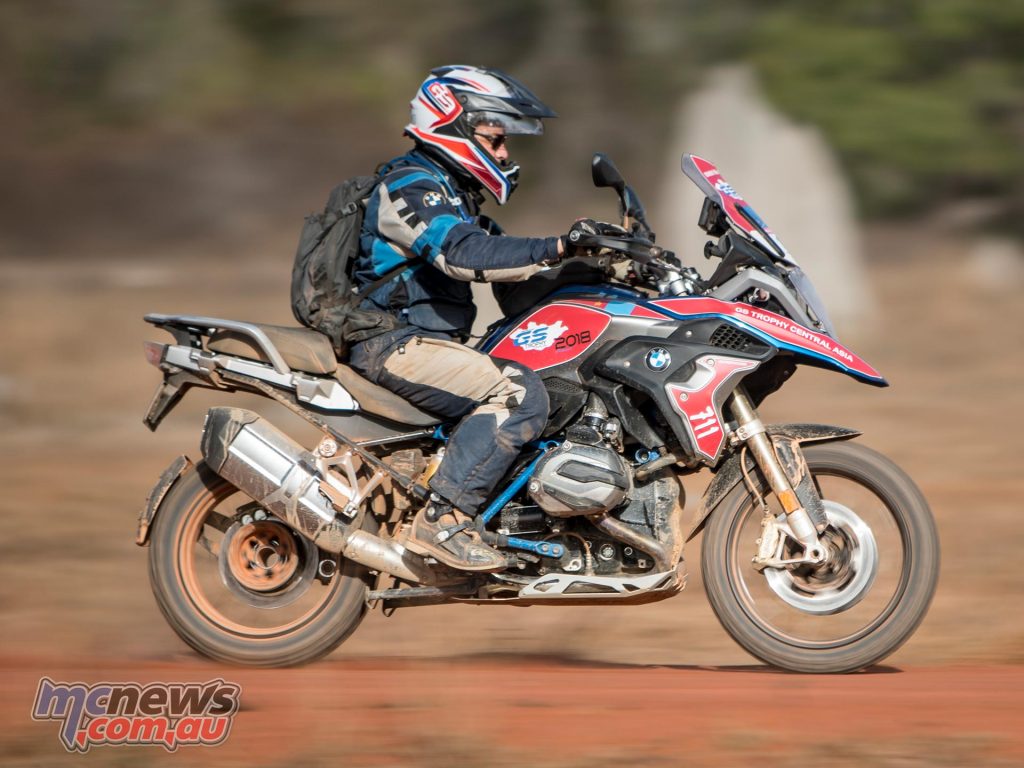
The low suspension bike is much more than just a lowered seat, it wears shorter springs, thus is actually a little more taut than the regular bike. ESA helps the machine retain its suppleness over bumps but it will never be quite as compliant as the regular Rallye X, that’s jsut plain physics. The low suspension is a $250 option and also includes a lower seat.

I used only a tankbag and rollbag mounted to the rear seat on this journey, as the Rallye X does not come standard with the pannier racks that the GSA model provides. BMW’s Vario luggage can be utilised but was not fitted to this particular bike. It also sports a one-piece Rallye seat, and can still carry a pillion when needed, and retains passenger footpegs. Pillions are just not nearly as well looked after as they are on other GS models.
The rider is still very well looked after, save for the more minimal screen that is unique to the Rallye X. The electronic safety aids and electronic suspension are the best in motorcycling, likewise the cruise control is smart enough to actually slow the motorcycle downhill. This meant that in the tunnels around Melbourne I could concentrate on the traffic around me, rather than worry about getting photographed doing 3km/h over the limit.
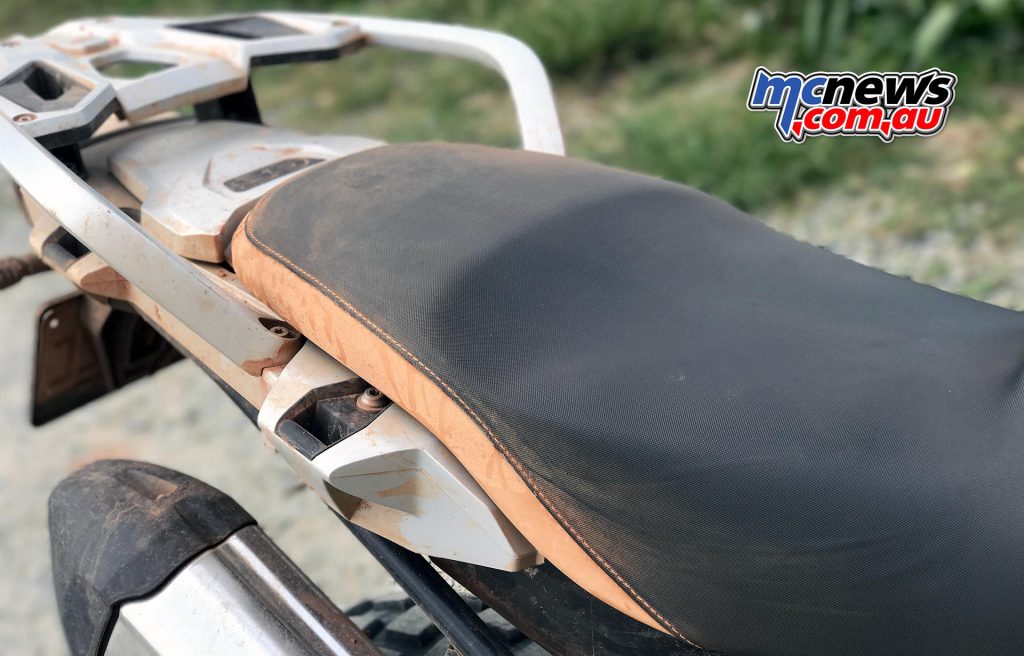
The rider interface with those safety aids is also the best I have ever used. With the Enduro Pro plug fitted that the bike comes with as standard, all your preferences are retained even when the ignition key is switched off. Toggling the traction control and ABS systems on or off while on the move is an absolute breeze, and is something other manufacturers certainly need to take note of! Even the cruise control arming switch does not have to be activated every time you start the bike.
The electronic suspension can be set to automatically control the preload according to the current machine weight, it knows when you put more luggage or a pillion on and responds accordingly, with no intervention at all from the rider. If you are going to be attacking rough dirt hard and want as much travel as possible, you can also set the system to pump everything up to maximum. It sounds complicated, and is at first, but once taking a machine home for good it will take an owner no time at all to learn how to get the best out of their machine in any given scenario.

Off-road I favoured the Enduro Pro riding mode for the suspension with minimal traction control intervention and the rear ABS deactivated, but with the throttle response set to rain. In these settings I could still revel in drifting the big GS through sweeping dirt turns without any activation from the traction control. It is smart enough to know you are drifting in control and only if you get too animated does it intervene. Only rough corrugations or air-time saw the system complain a little, but I can live with that and still preferred to leave it on, unless I wanted to pop it up on the back wheel of course.
The up-down quickshift system is brilliant and helps to polish one of the only remaining rough edges of the GS, and that is the gearbox. It works well enough, but doesn’t match the impeccable brilliance that the rest of the machine exhibits. To get the best out of the quickshift you have to overcome the riding habits learned over a lifetime.
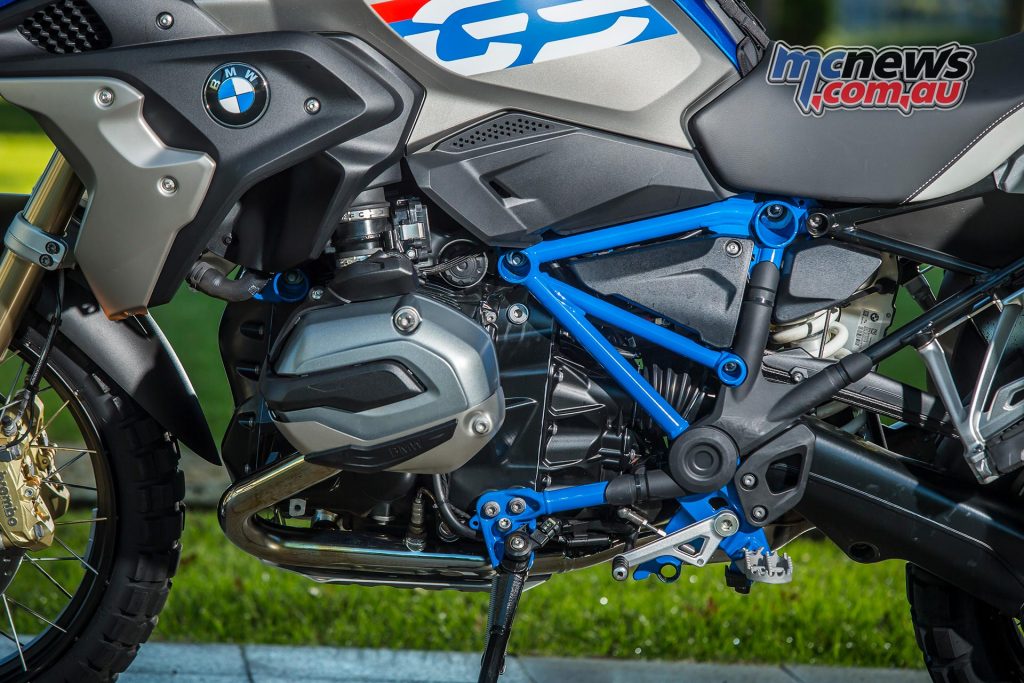
A positive throttle should be retained for upshifts, going against the natural response of a slight ease of the throttle for an upchange. You must retain a positive throttle on upshift to get the best out of the system. For downshifts ensure you roll the throttle off to the absolute stop for the system to work best for clutchless downshifts. If you stick to this regimen you will be rewarded with smooth clutchless shifts both up and down the box. If you don’t, then it will disappoint. That’s your fault, not the bikes.
For those that want the ultimate off-road GS the Rallye X is certainly it. It is also, to my eye, certainly the most handsome machine ever to roll out of the Berlin plant wearing a GS emblem. It looks very tough! Particularly when rolling on knobbly tyres.
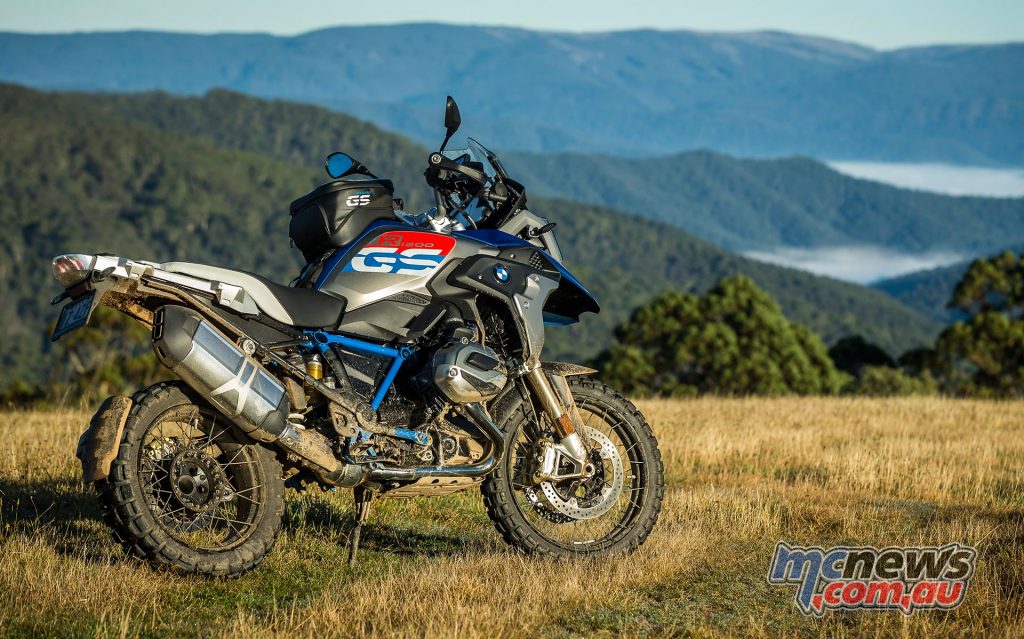
It also proved tough. The machine I was on had run the rough sand track alongside the Finke Desert Race route, as support bike for when Miles Davis competed in the gruelling event on a specially prepared Rallye X. The bike was then ridden to Cape York and by the time I was back in Melbourne had 11,000km on the odometer. It still felt taut, responsive and never skipped a beat during my time with the bike.
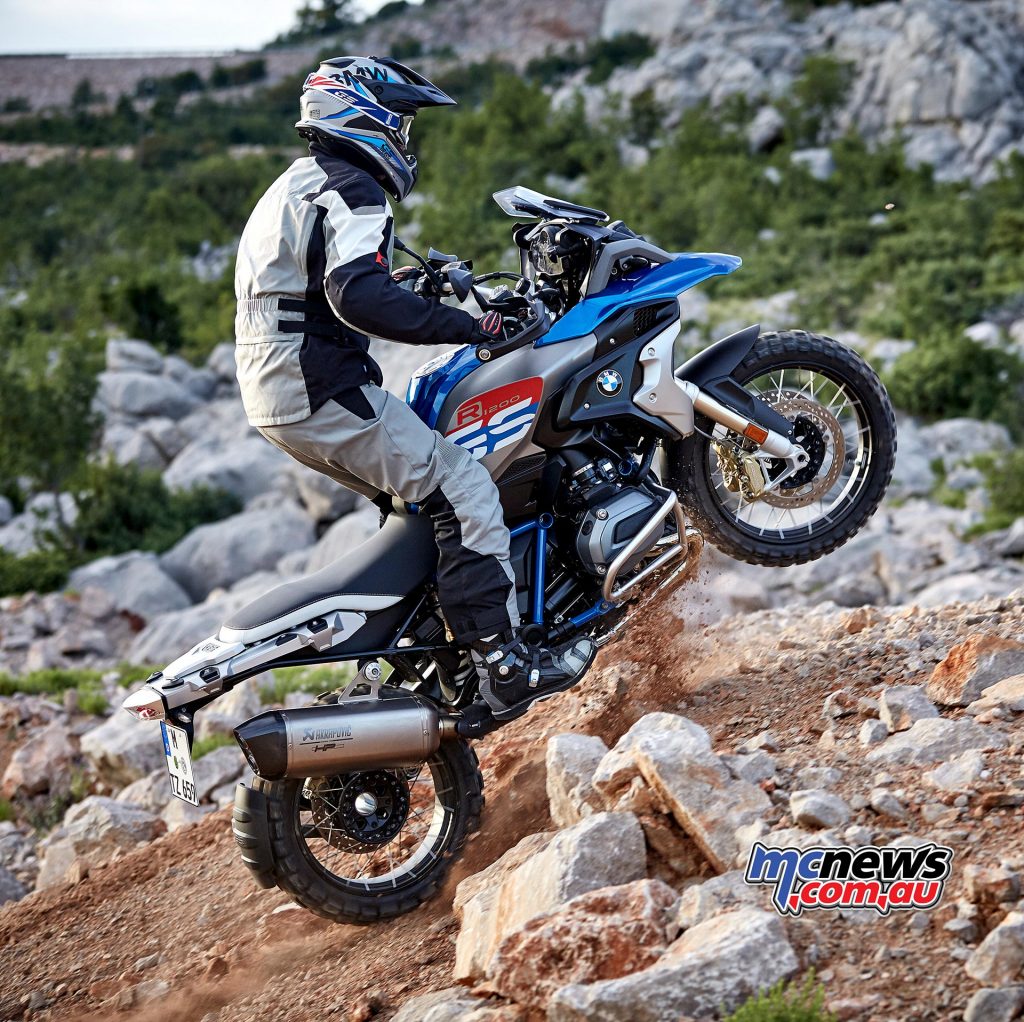
I would have liked this test machine to wear the optional Akrapovic muffler available from BMW. Due to the smoothness of the latest generation Boxer I often found myself unwittingly cruising in fifth, or sometimes even fourth, without realising it. A thick coating of dust from the Cape York adventure hid the gear position indicator on the intuitive and well thought out instrumentation.
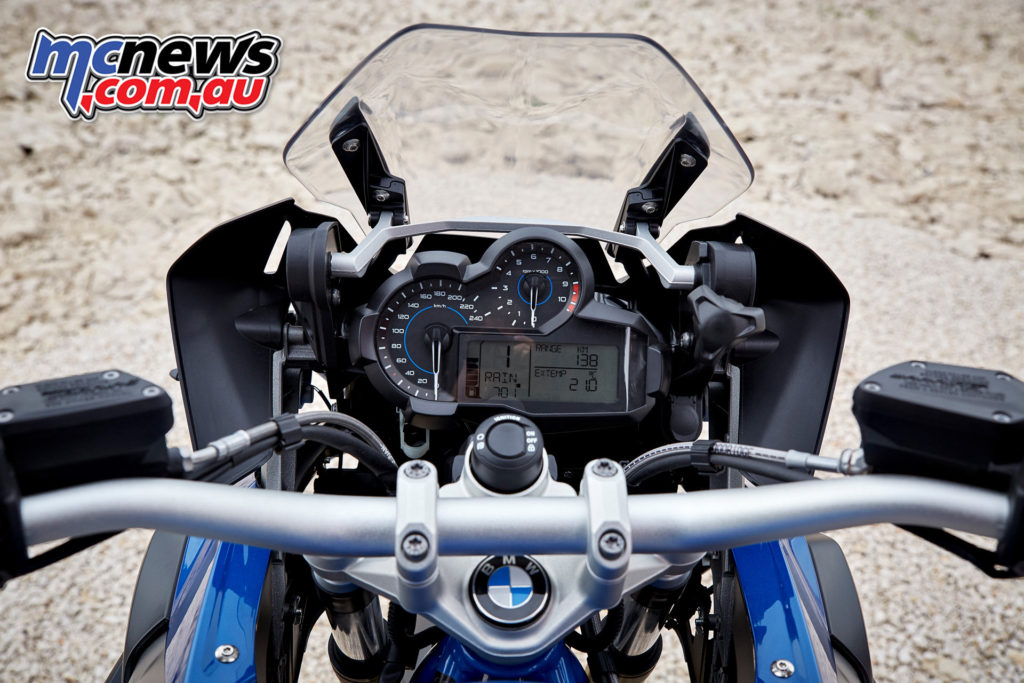
I did grow accustomed to the height of the machine, and certainly appreciated the firmer grade of ESA suspension and extra travel it offers over the regular GS.
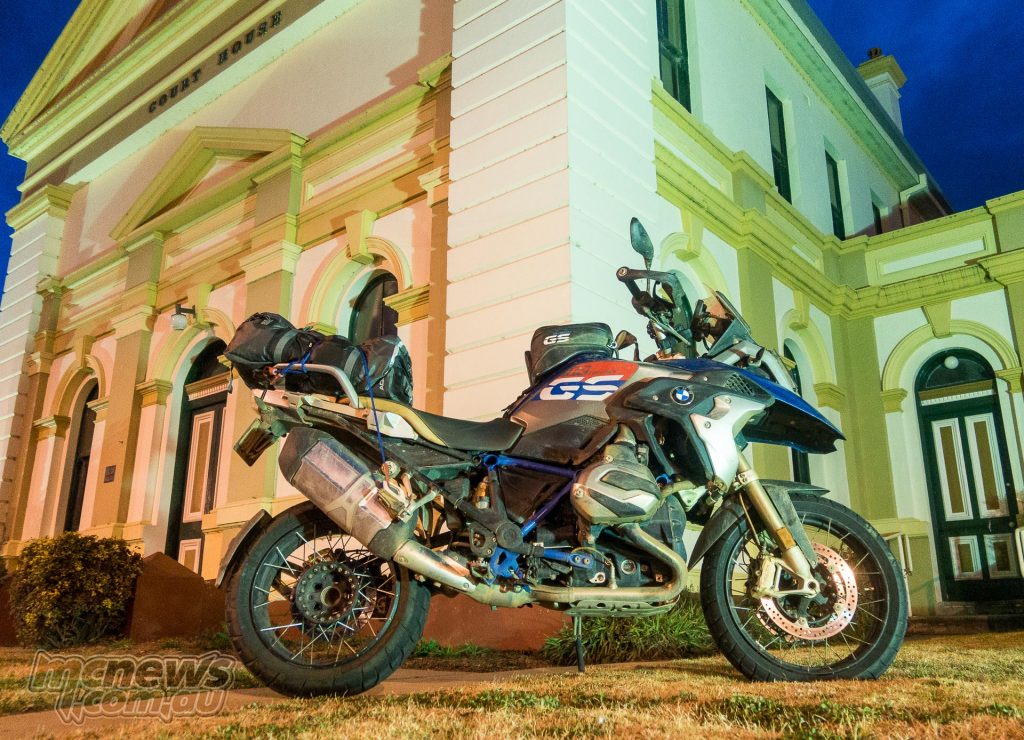
If you are not a hard-core off-roader though I am sure you would be more than happy to settle for the regular base model R 1200 GS, or the normal Rallye model, and pocket the very large chunk of change you would save by doing so. The base model is a whole lot of motorcycle and still an astoundingly versatile machine.
The Rallye X starts at $27,250, the same price as the R 1200 GS Tour variant. The base R 1200 GS starts at $21,850 while the Rallye commands a $23,050 sticker price. None of those quoted prices include on-road costs, so add roughly another 2k to arrive at the rideaway price.
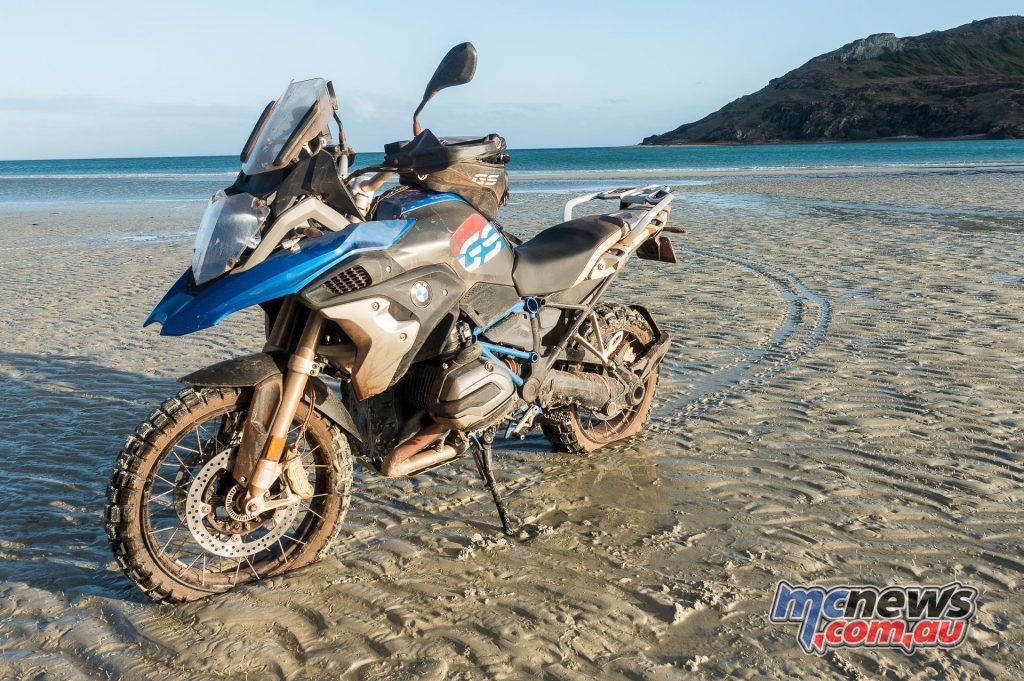
For this journey it is fair to say no other motorcycle in existence would have been as suitable when the entirety of the adventure is taken into account. Yes I would have liked a hard-core enduro bike to blast around the backtracks around the Cape, but I wouldn’t have liked to be on it for the 4000km of blacktop I also covered.
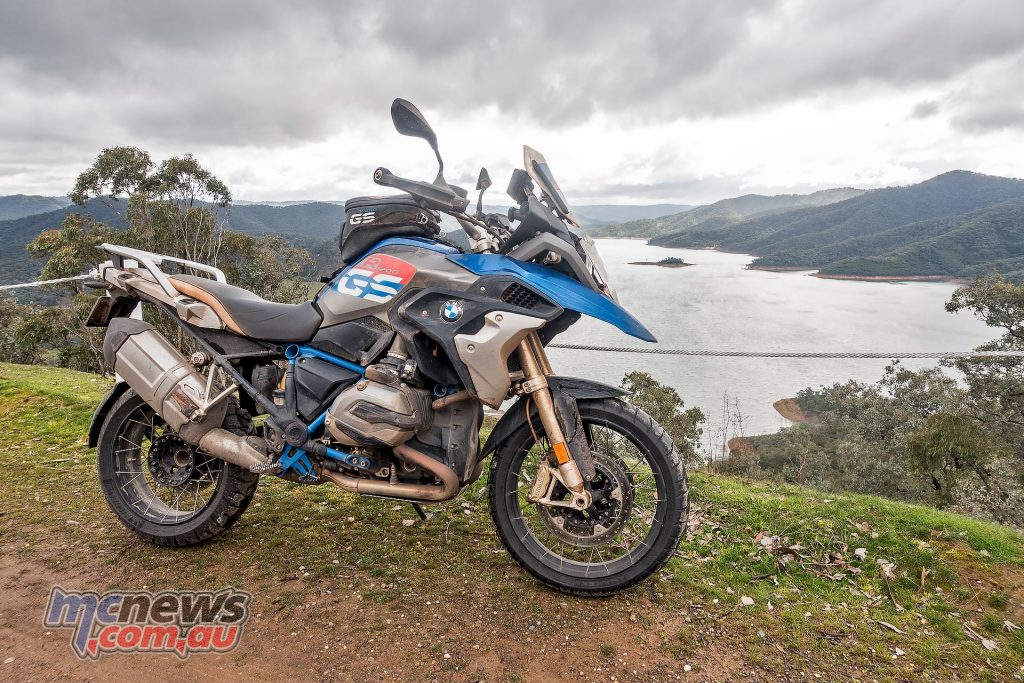
Likewise a K 1600 GT would have been the ultimate machine for the tarmac run from Cairns down to Wilsons Prom, but there is no way in hell you would have got one up to Cape York across the dirt. For overall versatility the GS continues to reign supreme as the ultimate all-round weapon for a warrior to attack the roads and trails of Australia. It is now more than ever before the Swiss Army Knife of motorcycling.
BMW R 1200 GS Rallye X Standard Equipment
- ABS
- Chrome exhaust
- Heated grips
- Tyre pressure monitoring
- Hand guards
- Sports suspension
- Off road tyres
- Black powertrain
- Cross spoke wheels
- Sport windshield
- Rallye style seat
- Frame guards
- Enduro wide foot pegs
- Radiator protection guards
- Gold brake callipers
- Dynamic ESA electronic suspension
- Navigation preparation
- Cruise control
- LED headlight
- Gear Shift Assist Pro clutch-less and down shifts
- Riding Mode Pro (Rain, Road, Dynamic, Dynamic Pro, Enduro, Enduro Pro)
- DTC dynamic traction control
- Hill Start Control
- LED Indicators
- Daytime riding light
- ABS Pro cornering ABS
- Dynamic brake light


